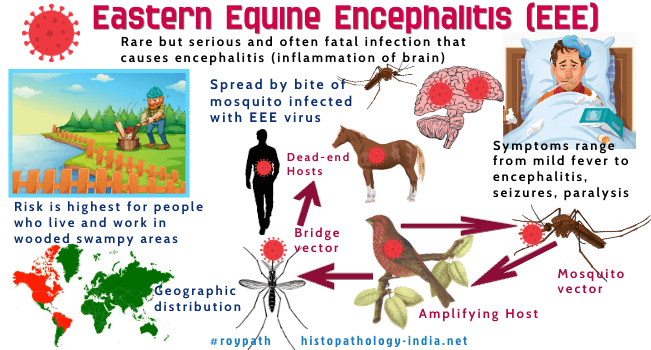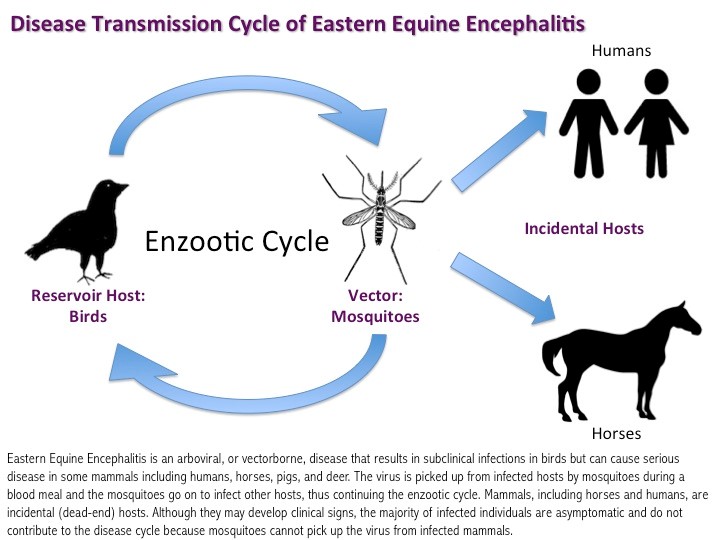Current News on Eastern Equine Encephalitis (EEE)
Eastern Equine Encephalitis (EEE) is a rare but serious mosquito-borne viral disease that has recently gained attention due to a fatal case reported in New York. This report aims to summarize the latest developments regarding EEE, including the recent death, public health responses, and general information about the disease.
Recent Fatality in New York
On September 24, 2024, it was reported that a New York resident died from EEE, marking the first confirmed human case in the state since 2015. The individual was diagnosed in Ulster County, and the death prompted Governor Kathy Hochul to declare the situation an imminent threat to public health. This declaration is significant as it highlights the potential risks associated with EEE, especially during the mosquito season.
Governor's Response
In light of this tragic event, Governor Hochul announced a statewide public health response aimed at reducing the risk of mosquito-borne illnesses. The state will be increasing resources and efforts to combat the spread of EEE and educate the public about preventive measures. This includes spraying insecticides in affected areas and encouraging residents to take precautions against mosquito bites.
Understanding Eastern Equine Encephalitis

What is EEE?
EEE is caused by the Eastern equine encephalitis virus, which is primarily transmitted to humans through the bite of infected mosquitoes. The disease is particularly concerning due to its high mortality rate, which can be as high as 30% in infected individuals. Symptoms of EEE can include:
- Fever
- Headache
- Irritability
- Confusion
- Seizures
- Coma
Most people who contract the virus do not show symptoms, but those who do can experience severe neurological complications.
Current Surveillance and Data
According to the Centers for Disease Control and Prevention (CDC), EEE is monitored through both human and non-human surveillance. The absence of reported cases in non-human populations does not necessarily indicate a lack of risk, as there can be a lag in reporting. The CDC emphasizes the importance of ongoing surveillance and public awareness to mitigate the risks associated with EEE.
Public Health Alerts and Precautions
Following the recent death in New York, health officials are urging residents to take preventive measures against mosquito bites. These measures include:
- Using insect repellent containing DEET
- Wearing long sleeves and pants when outdoors, especially during dusk and dawn
- Eliminating standing water around homes to reduce mosquito breeding sites
- Staying indoors during peak mosquito activity times
Other Recent Cases
In addition to the New York case, there have been reports of EEE in other states, including Massachusetts, where a man in his 80s was diagnosed with the virus. This has raised concerns across the Northeast, prompting health officials to increase awareness and preventive measures.

The recent death from Eastern Equine Encephalitis in New York serves as a stark reminder of the potential dangers posed by mosquito-borne diseases. With the CDC and state health departments ramping up efforts to combat EEE, it is crucial for the public to remain informed and vigilant. As the mosquito season continues, awareness and preventive actions can help mitigate the risks associated with this serious illness.
For more detailed information, you can refer to the following articles:
- New York Resident Dies of Rare Mosquito-Borne Virus Known as Eastern Equine Encephalitis
- Hochul Orders Statewide Response After Fatal Case of Eastern Equine Encephalitis
- What to Know About E.E.E., a Rare Mosquito-Borne Illness
Stay safe and informed as we navigate through this mosquito season.




